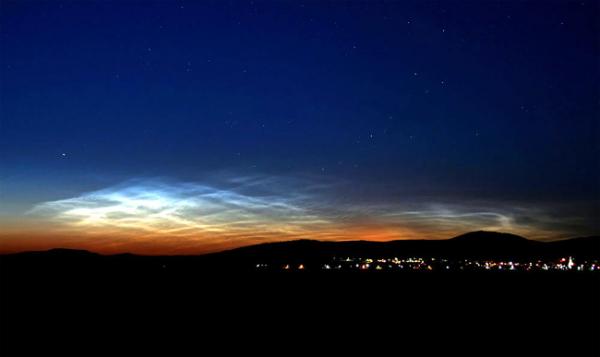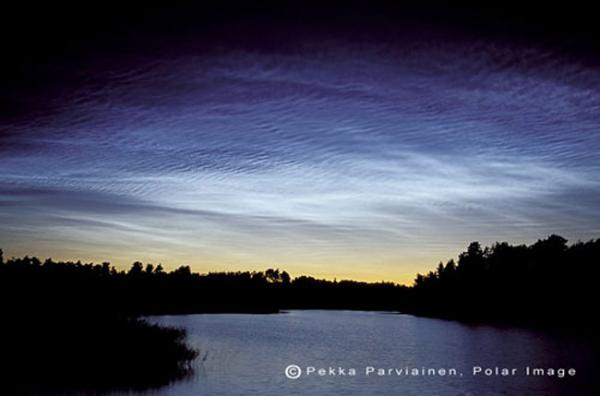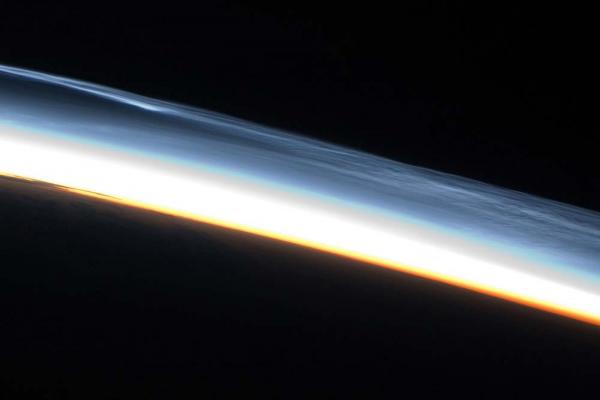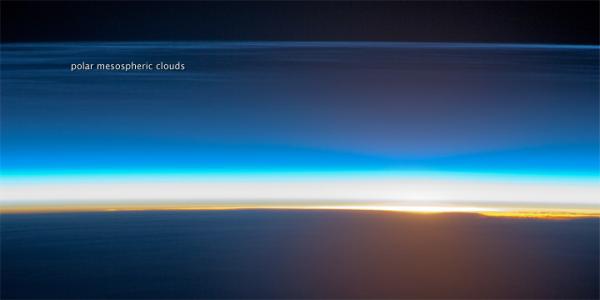In Images: Mysterious Night-Shining Clouds

Edge of space

Astronauts can often see noctilucent clouds (called polar mesospheric clouds when viewed from space) as they orbit the Earth with their unique view of the planet's atmosphere . This image was acquired at an altitude of just over 200 miles in the pre-dawn hours of July 22, 2008 as the International Space Station was passing over western Mongolia in central Asia.
First seasonal sighting

This image shows one of the first ground sightings of noctilucent clouds in the 2007 season over Budapest, Hungary on June 15, 2007. To learn about how these clouds form and when and where you can see them, click here.
After sunset

Noctilucent clouds over Kustavi, Finland. Photo taken July 27/28, 2001, at approximately 12:30 a.m. local time, or 4 hours after sunset. This image shows a noctilucent cloud illuminating the water below and a gold hue on the horizon.
Cloud map

This image shows a "map" of noctilucent clouds taken by the Aeronomy of Ice in the Mesosphere (AIM) satellite on July 14, 2009. The North Pole is in the center. Latitude bands of 80N, 70N, and 60N are also indicated by the light blue circles.
Edge-on

Noctilucent clouds, also called polar mesospheric clouds, exhibit thin, wispy light blue forms that contrast with the darkness of space (image upper right). Lower levels of the clouds are more strongly illuminated by the sun and appear light orange to white. Clouds closest to the Earth's surface are reddish-orange (image center). Image was taken Jan. 30, 2010, with a Nikon D2Xs digital camera fitted with a 70mm lens.
Moon and clouds

The sliver of the setting moon and clouds that shine at night noctilucent clouds caught the eye of astronaut Ed Lu aboard the International Space Station in July 2003. The image was taken when the orbiting laboratory was over central Asia. June and July is the season for noctilucent clouds in the northern hemispherethey form in the polar mesosphere, generally above 50 degrees latitude.
Sunrise view

This unusual astronaut photograph shows polar mesospheric clouds illuminated by the rising, rather than setting sun. Low clouds on the horizon appear yellow and orange, while higher clouds and aerosols (particles like dust and pollution) are illuminated a brilliant white. Polar mesospheric clouds appear as light blue ribbons extending across the top of the image. The ISS was located over the Greek island of Kos in the Aegean Sea (near the southwestern coastline of Turkey) when the image was taken at approximately midnight local time. The ISS was tracking northeastward, nearly parallel to the terminator, making it possible to observe an apparent "sunrise" almost due north.
Get the world’s most fascinating discoveries delivered straight to your inbox.



